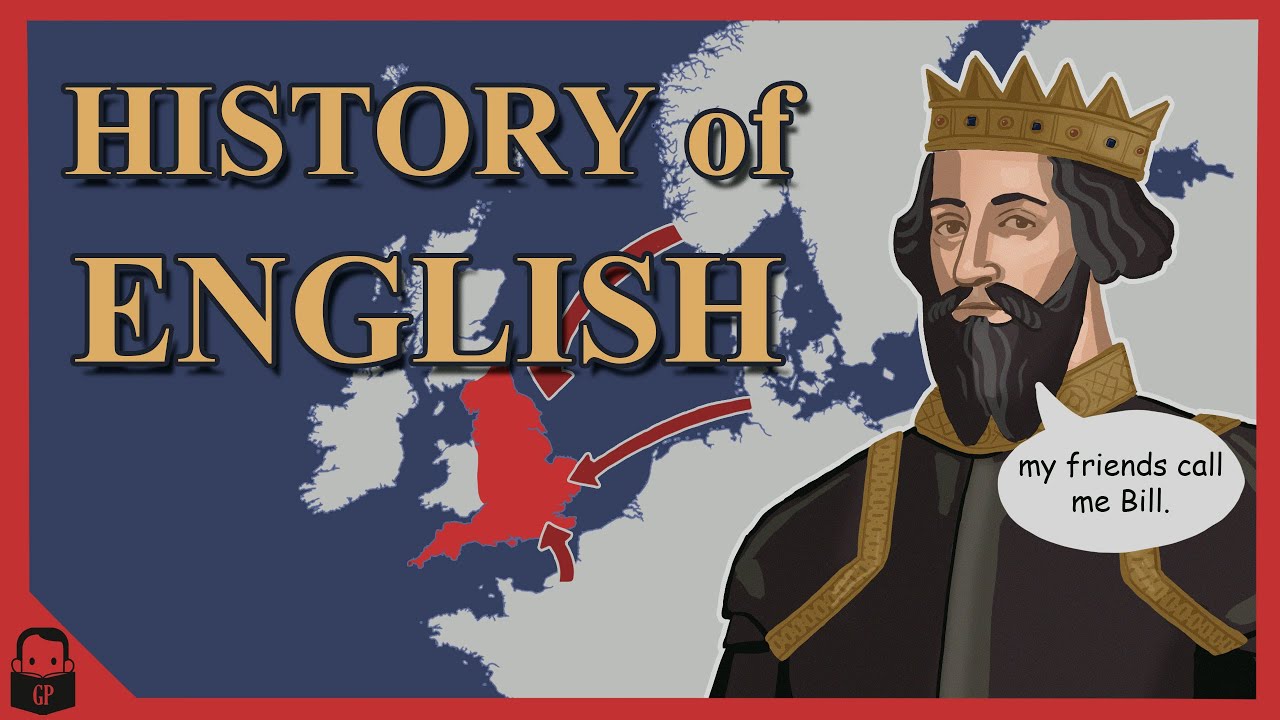From Old English to Middle English: The effects of language contact
Summary
TLDRThis video explores the transformation of English from Old to Middle English, emphasizing the role of language contact. It contrasts Old English, exemplified by 'Beowulf,' with Middle English, using Chaucer's 'Canterbury Tales.' The script highlights how Viking invasions and the Norman Conquest influenced English vocabulary, introducing Scandinavian and French loanwords. These contacts not only reflect violence and conquest but also the peaceful assimilation of cultures, enriching English with over 10,000 French words post-1066. The video concludes by noting English's ongoing evolution, borrowing from multiple languages and changing over time.
Takeaways
- 📚 The English language has evolved significantly over its long history, with changes from Old English to Middle English being particularly notable.
- 🗣️ Middle English differs from Old English in pronunciation, grammar, and vocabulary, as illustrated by passages from Beowulf and The Canterbury Tales.
- 🌐 Language contact, especially with Scandinavian and French languages, played a crucial role in the lexical changes from Old to Middle English.
- 🇫🇷 The Norman Conquest of 1066 marked the beginning of significant French influence on the English language, introducing many French loanwords.
- 🏛️ French loanwords entered English related to governance, law, religion, arts, and fashion, reflecting the cultural and social dominance of the French-speaking nobility.
- 💥 Old Norse, brought to England by the Vikings, contributed everyday words to English, despite the violent nature of their initial contact.
- 🔍 Scandinavian loanwords in English often reflect the Viking presence and their interactions with the English, both peaceful and hostile.
- 📈 The Oxford English Dictionary records that over 10,000 French words were adopted into English after 1066, constituting about 30% of Middle English vocabulary.
- 🌟 The comparison of Beowulf and The Canterbury Tales passages highlights the shift from a lexicon with no loanwords to one rich with borrowed terms.
- 🌐 English continues to evolve and borrow words from various languages, reflecting ongoing cultural contacts and the dynamic nature of language.
Q & A
What is the main focus of the video script?
-The main focus of the video script is to explore how language contact, particularly with Scandinavian and French languages, influenced the transition from Old English to Middle English.
How does the video script illustrate the differences between Old English and Middle English?
-The script illustrates the differences by reading out two passages from medieval literature: the opening lines of Beowulf in Old English and The Canterbury Tales in Middle English, highlighting changes in pronunciation, grammar, and vocabulary.
What is the significance of the Viking influence on the English language during the Old English period?
-The Viking influence, through the introduction of Old Norse, brought about loanwords related to their violent activities and everyday life, which entered the English language and contributed to its evolution.
What types of words did Old Norse contribute to the English language?
-Old Norse contributed words related to violence such as 'ransack' and 'slaughter', and also everyday words like 'sky', 'window', 'husband', and 'happy'.
Why did French have such a significant impact on Middle English vocabulary?
-French had a significant impact because after the Norman Conquest in 1066, French-speaking Normans replaced the English-speaking upper class, leading to the incorporation of many French words into the English language.
How did the French language influence the English vocabulary related to governance and the arts?
-French loanwords entered English vocabulary in areas such as government with words like 'chancellor' and 'council', law with 'accuse' and 'attorney', and arts and fashion with 'beauty', 'fashion', and 'music'.
What percentage of Middle English words were of French origin according to the Oxford English Dictionary?
-According to the Oxford English Dictionary, about 30 percent of all Middle English words were of French origin.
How does the video script demonstrate the presence of loanwords in Middle English literature?
-The script demonstrates this by comparing the absence of loanwords in the Old English passage from Beowulf with the presence of Scandinavian and French loanwords in the Middle English passage from The Canterbury Tales.
What is the role of cultural contact in the evolution of the English language as discussed in the script?
-Cultural contact has played a significant role in enriching and changing the English language by introducing loanwords from various languages, which is an ongoing process that continues to shape the language.
What other languages besides Scandinavian and French have contributed to the English language according to the script?
-Besides Scandinavian and French, English has borrowed words from Latin, Spanish, German, Hindi, Japanese, and Dutch, among others.
How does the video script conclude the discussion on the evolution of the English language?
-The script concludes by emphasizing that language always changes and that in 500 years, English might be as different from today's English as Middle English was from Old English due to continued cultural contact and borrowing.
Outlines

This section is available to paid users only. Please upgrade to access this part.
Upgrade NowMindmap

This section is available to paid users only. Please upgrade to access this part.
Upgrade NowKeywords

This section is available to paid users only. Please upgrade to access this part.
Upgrade NowHighlights

This section is available to paid users only. Please upgrade to access this part.
Upgrade NowTranscripts

This section is available to paid users only. Please upgrade to access this part.
Upgrade NowBrowse More Related Video
5.0 / 5 (0 votes)





